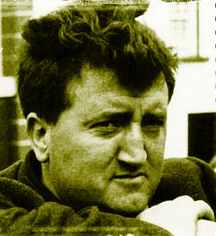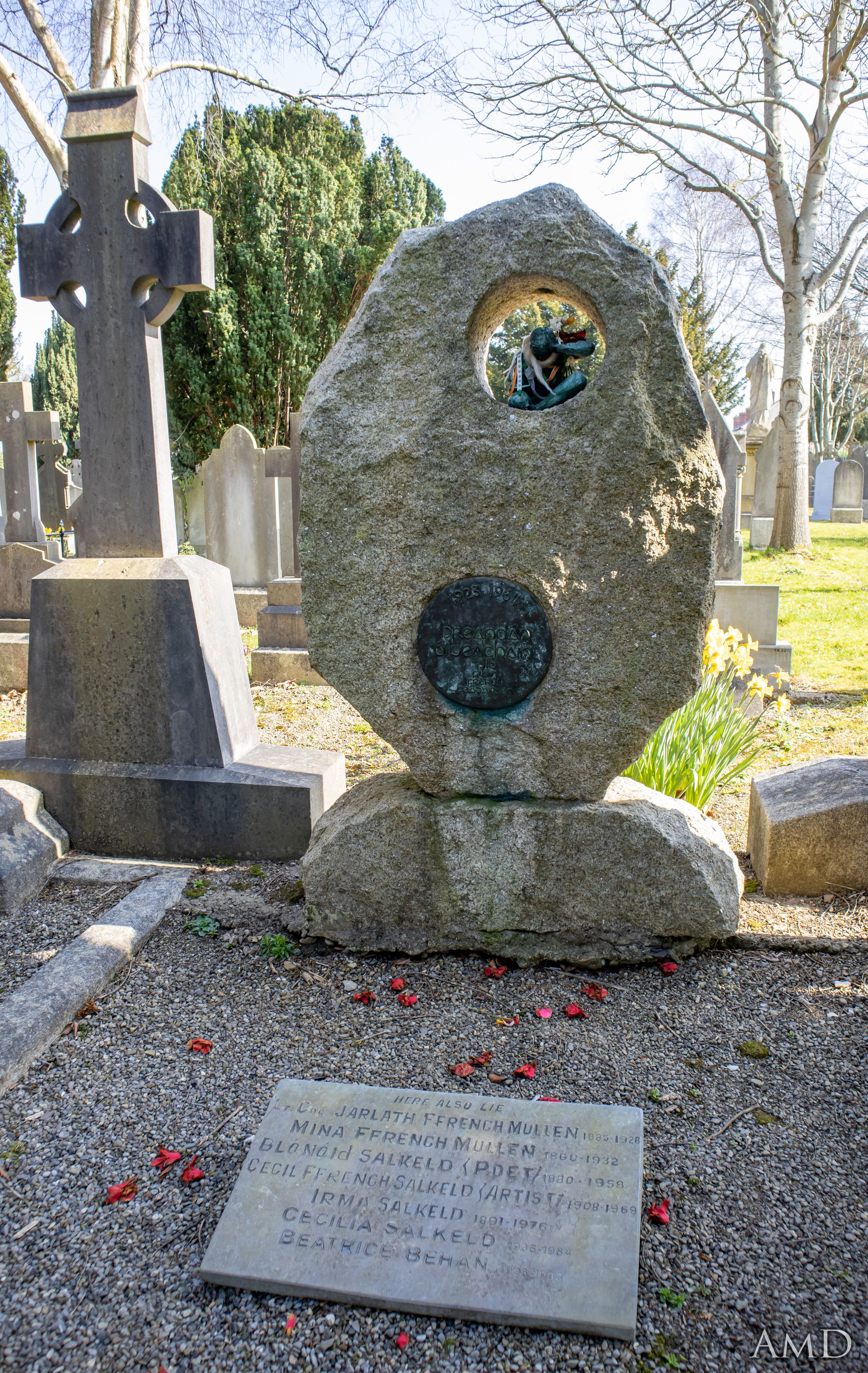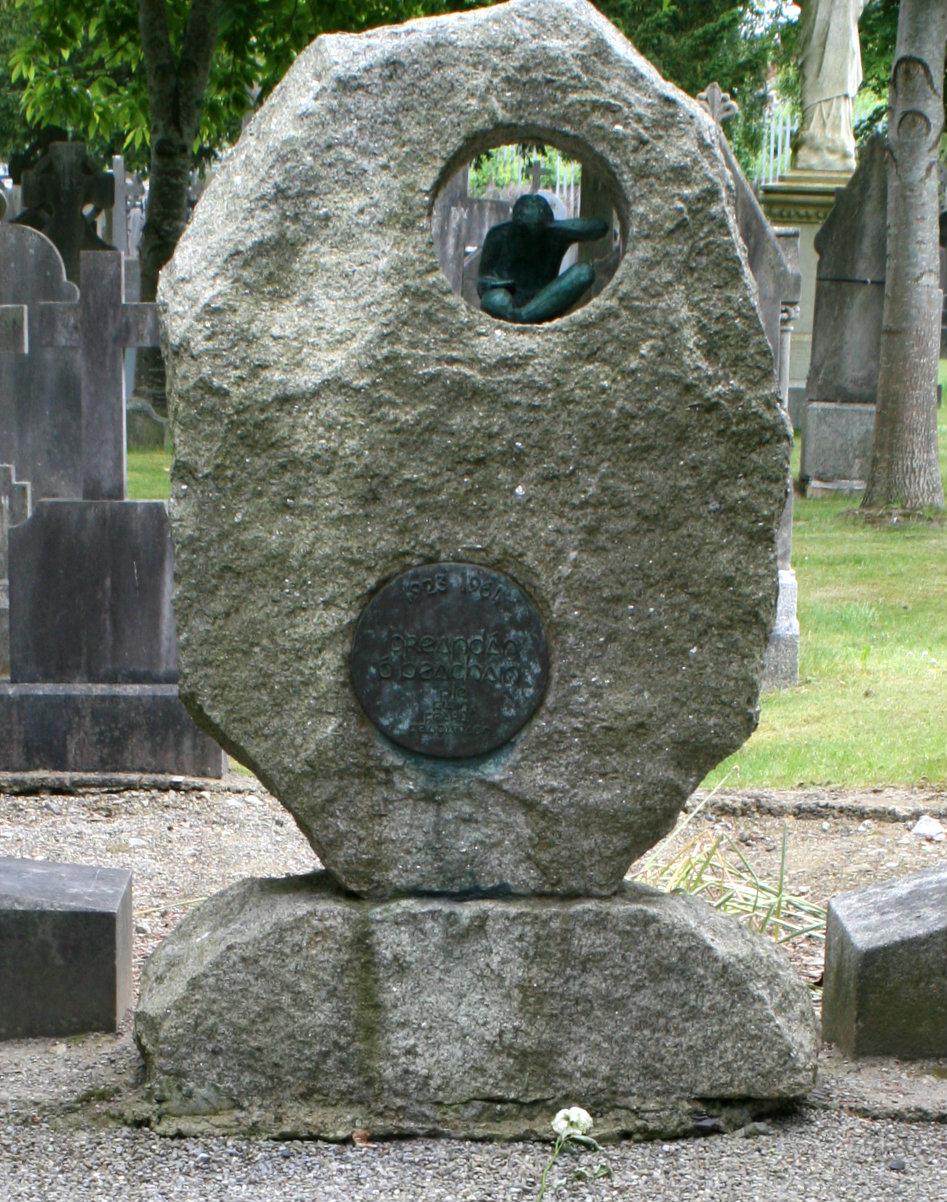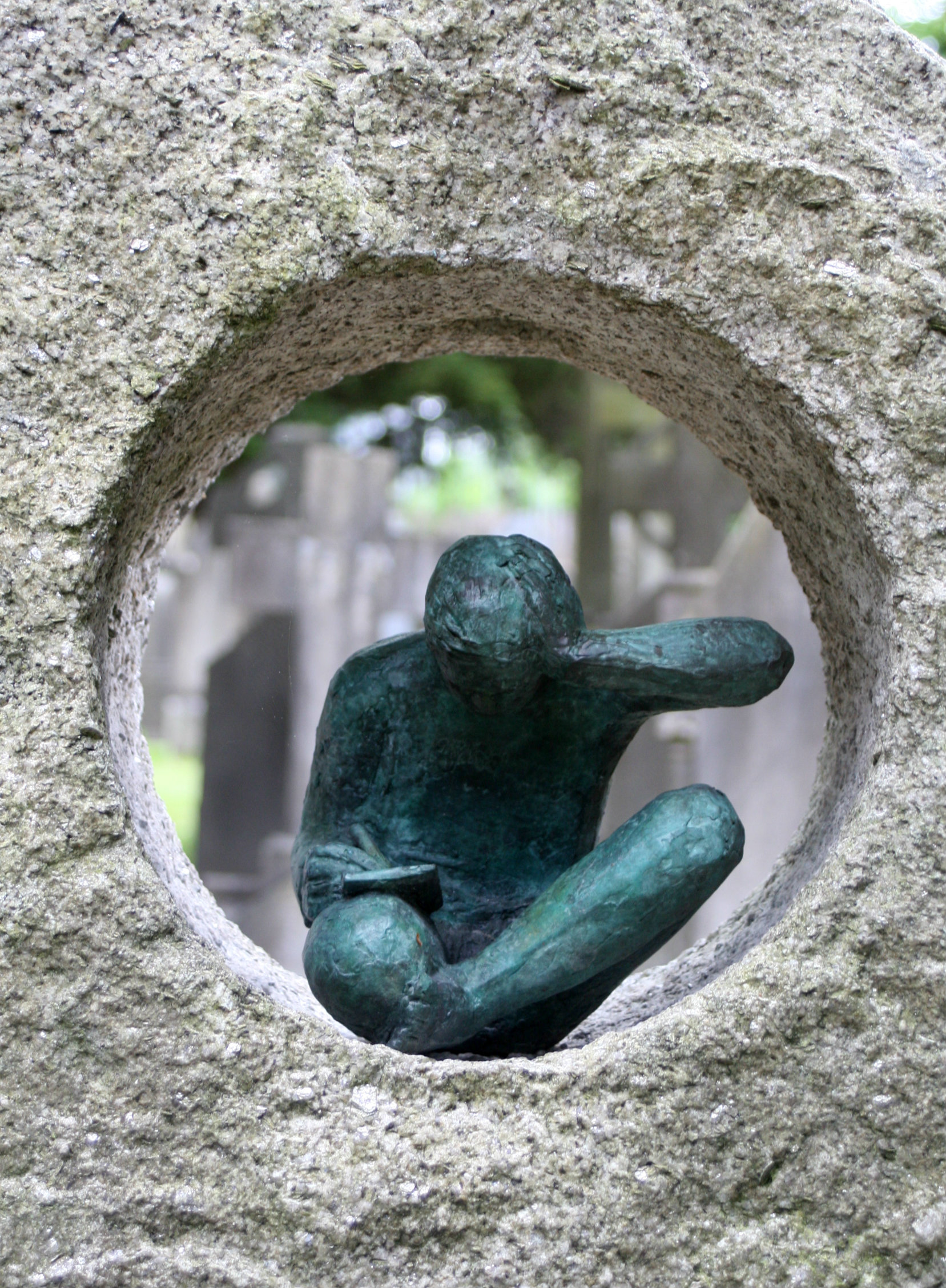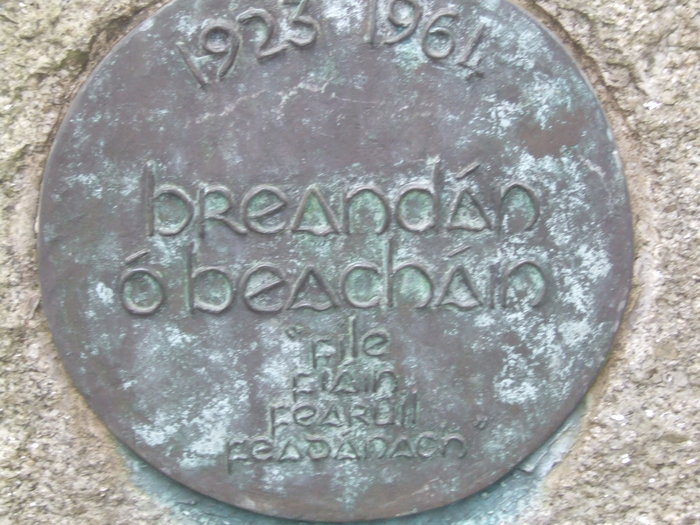Author. He was a 20th century Irish author, who wrote in both the Irish and English languages short stories, poems, novels and was one of the most successful Irish dramatists. Politically, he was also a committed Irish Republican. He was born in inner city Dublin into an educated working class family. At the age of thirteen, he left school to become a house painter, like his father. In 1937, the family moved to a new local authority housing scheme in Crumlin, Dublin. Here he became a member of Fianna Eireann, the youth wing of the IRA and published his first poems and prose in the organization's magazine Fianna: "The Voice of Young Ireland." In 1939 he was arrested in Liverpool, England in possession of explosives for use in a planned IRA bombing campaign. He was sentenced to three years in Borstal Prison in Kent and did not return to Ireland until 1941. In 1942, he was tried for the attempted murder of two detectives and sentenced to fourteen years. He was sent to Mountjoy Prison and later to the Curragh Internment Camp. He was released in 1946 as part of a general amnesty of Irish Republican prisoners. In 1947 he spent a short time in prison in Manchester for helping a fellow Republican to escape from jail. His prison experiences were central to his future writing career. While in Mountjoy Prison, he wrote his first play, "The Landlady", and also began to write short stories and other prose. Some of this work was published in "The Bell", the leading Irish literary magazine of the time. He also learned Irish in prison and, after his release in 1946, he spent some time in the Gaeltacht areas of Galway and Kerry, where he started writing poetry in Irish. By the early 1950s he was earning a living as a writer for radio and newspapers and had gained a reputation as something of a character on the streets and in literary circles in Dublin. His major breakthrough came in 1954 when his play "The Quare Fellow," which was based on his experiences in jail, was produced in the Pike Theatre in Dublin. The play ran for six months. In May of 1956, "The Quare Fellow" opened in the Theatre Royal, Stratford in a production by Joan Littlewood, bringing international fame to him as the author. In 1957, his Irish language play, "An Giall" or "The Hostage" opened in the Damer Theatre and his autobiographical novel, "The Borstal Boy" was published. He was now established as one of the leading Irish writers of his generation. Having difficulty with his newly-acquired fame, he began to drank alcoholic beverages even more frequently. He had long been a heavy drinker; once describing himself, on one occasion, as "a drinker with a writing problem." He diagnosed with diabetes in the early 1960s. This combination resulted in a series of notoriously drunken public appearances, both on stage and television along with a health decline. He died in the Meath Hospital, Dublin. In 1970 Burt Kaiser produced the New York production of Brendan Behan's "Borstal Boy," receiving both the Tony Award and the New York Drama Circle Award that year for best foreign play.
Author. He was a 20th century Irish author, who wrote in both the Irish and English languages short stories, poems, novels and was one of the most successful Irish dramatists. Politically, he was also a committed Irish Republican. He was born in inner city Dublin into an educated working class family. At the age of thirteen, he left school to become a house painter, like his father. In 1937, the family moved to a new local authority housing scheme in Crumlin, Dublin. Here he became a member of Fianna Eireann, the youth wing of the IRA and published his first poems and prose in the organization's magazine Fianna: "The Voice of Young Ireland." In 1939 he was arrested in Liverpool, England in possession of explosives for use in a planned IRA bombing campaign. He was sentenced to three years in Borstal Prison in Kent and did not return to Ireland until 1941. In 1942, he was tried for the attempted murder of two detectives and sentenced to fourteen years. He was sent to Mountjoy Prison and later to the Curragh Internment Camp. He was released in 1946 as part of a general amnesty of Irish Republican prisoners. In 1947 he spent a short time in prison in Manchester for helping a fellow Republican to escape from jail. His prison experiences were central to his future writing career. While in Mountjoy Prison, he wrote his first play, "The Landlady", and also began to write short stories and other prose. Some of this work was published in "The Bell", the leading Irish literary magazine of the time. He also learned Irish in prison and, after his release in 1946, he spent some time in the Gaeltacht areas of Galway and Kerry, where he started writing poetry in Irish. By the early 1950s he was earning a living as a writer for radio and newspapers and had gained a reputation as something of a character on the streets and in literary circles in Dublin. His major breakthrough came in 1954 when his play "The Quare Fellow," which was based on his experiences in jail, was produced in the Pike Theatre in Dublin. The play ran for six months. In May of 1956, "The Quare Fellow" opened in the Theatre Royal, Stratford in a production by Joan Littlewood, bringing international fame to him as the author. In 1957, his Irish language play, "An Giall" or "The Hostage" opened in the Damer Theatre and his autobiographical novel, "The Borstal Boy" was published. He was now established as one of the leading Irish writers of his generation. Having difficulty with his newly-acquired fame, he began to drank alcoholic beverages even more frequently. He had long been a heavy drinker; once describing himself, on one occasion, as "a drinker with a writing problem." He diagnosed with diabetes in the early 1960s. This combination resulted in a series of notoriously drunken public appearances, both on stage and television along with a health decline. He died in the Meath Hospital, Dublin. In 1970 Burt Kaiser produced the New York production of Brendan Behan's "Borstal Boy," receiving both the Tony Award and the New York Drama Circle Award that year for best foreign play.
Bio by: Frank Duffin
Inscription
1923-1964
breandán
ó beacháin
"file
fiáin
fearúil
feadánach"
Translation:
Brendan Behan
"wild, manly poet and piper"
Gravesite Details
Granite and bronze gravestone created by sculptor Clíodhna Cussen in 1974
Family Members
Advertisement
